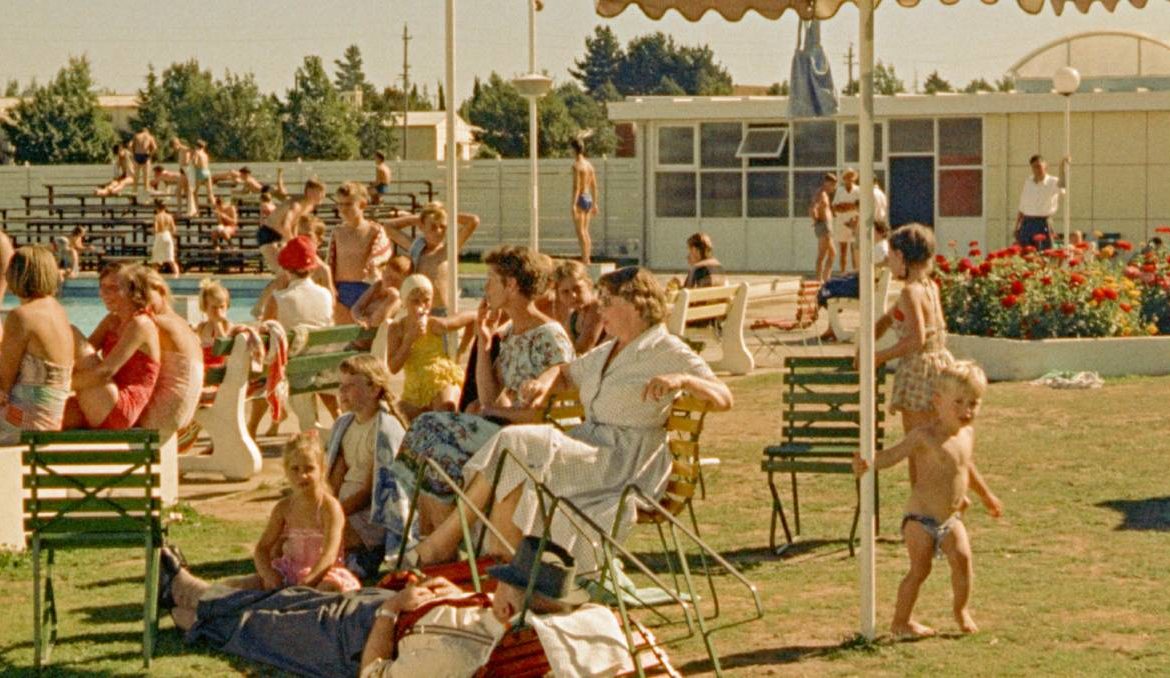news, latest-news, National Film and Sound Archive, canberra, canberra foundation
We might have had a public holiday on Monday but Friday is Canberra’s real birthday, the national capital officially turning 108. Canberra was named and its foundation stone laid on March 12, 1913. The stone now sits between Parliament House and Old Parliament House. Canberrans can travel back in time and see how the city grew and evolved with an evocative film program being screened daily at the National Film and Sound Archive. The new Canberra Daily Program is screening for free in the NFSA Theatrette. The archive is a treasure trove of the big moments in Canberra’s history but also the smaller, more domestic, just plain engaging events, such as footage of when Skippy the kangaroo visited the national capital in 1968, attracting a crowd of 20,000 to Monaro Mall. Or a 1974 news reel showing more than 50 cyclists – pre-helmets – agitating for more bike paths in Canberra. Audiences worldwide can also explore a Canberra time capsule on the NFSA website, as well as a collection of Canberra news through the decades Included in the daily Canberra program is the 1959 documentary Canberra Today and Tomorrow, which focuses on suburbia and leisure pursuits in the national capital. Tomorrow’s Canberra directed in 1972 by none other than future Hollywood director Fred Schepisi, looks forward to the year 2000 as planners prepare to take the city to a population of 500,000. John Overall, the inaugural commissioner of the National Capital Development Commission (and the father of current Palerang and Queanbeyan mayor Tim Overall) speaks in the documentary at the end of his 15-year career planning the national capital. The man who would later be Sir John Overall suggests in Tomorrow’s Canberra that planners then regarded the environment as a paramount concern. “To keep man in scale with his environment, to not allow the machine to dominate and to allow the natural environment to come through in the planning process, and of course the leasehold system of land tenure does permit this,” he says. “For instance, in this inland city of Canberra, the waterways are vital and important. They are linked together to create lakes, to create a parkway system and land protected on each side to provide an environment, a natural environment …against encroachment from residential development.” The planners from nearly five decades ago also discuss how the city is growing at 10 per cent per year and perhaps the nascent town centres should be opened up as employment areas to reduce congestion. That’s howled down by another who declares: “People jostling together interact with each other and create a viable city centre. They give the city character, they give it strength, which it now lacks. It’s sterile.” Some things never change? Or have they? Also on the NFSA program is the black and white film Canberra in the 1920s, the 1952 government film Canberra Through the Seasons looking at its natural beauty and a clip of that time the High Commission of the United Kingdom hosted a local dog show in its gardens. The National Film and Sound Archive is in McCoy Circuit, Acton.
/images/transform/v1/crop/frm/32suSVsqH3pdw6NJyh92X9D/4ff9a4ff-afbf-4e6f-a9da-36f63da65a55.jpg/r492_262_3641_2041_w1200_h678_fmax.jpg
We might have had a public holiday on Monday but Friday is Canberra’s real birthday, the national capital officially turning 108.
Canberra was named and its foundation stone laid on March 12, 1913. The stone now sits between Parliament House and Old Parliament House.
Canberrans can travel back in time and see how the city grew and evolved with an evocative film program being screened daily at the National Film and Sound Archive. The new Canberra Daily Program is screening for free in the NFSA Theatrette.
The 1959 documentary Canberra Today and Tomorrow looks at suburbia and leisure pursuits in the national capital. Picture: NFSA
Included in the daily Canberra program is the 1959 documentary Canberra Today and Tomorrow, which focuses on suburbia and leisure pursuits in the national capital.
Tomorrow’s Canberra directed in 1972 by none other than future Hollywood director Fred Schepisi, looks forward to the year 2000 as planners prepare to take the city to a population of 500,000.
John Overall, the inaugural commissioner of the National Capital Development Commission (and the father of current Palerang and Queanbeyan mayor Tim Overall) speaks in the documentary at the end of his 15-year career planning the national capital.
The man who would later be Sir John Overall suggests in Tomorrow’s Canberra that planners then regarded the environment as a paramount concern.
“To keep man in scale with his environment, to not allow the machine to dominate and to allow the natural environment to come through in the planning process, and of course the leasehold system of land tenure does permit this,” he says.
“For instance, in this inland city of Canberra, the waterways are vital and important. They are linked together to create lakes, to create a parkway system and land protected on each side to provide an environment, a natural environment …against encroachment from residential development.”
The planners from nearly five decades ago also discuss how the city is growing at 10 per cent per year and perhaps the nascent town centres should be opened up as employment areas to reduce congestion.
That’s howled down by another who declares: “People jostling together interact with each other and create a viable city centre. They give the city character, they give it strength, which it now lacks. It’s sterile.” Some things never change? Or have they?
Also on the NFSA program is the black and white film Canberra in the 1920s, the 1952 government film Canberra Through the Seasons looking at its natural beauty and a clip of that time the High Commission of the United Kingdom hosted a local dog show in its gardens.
The National Film and Sound Archive is in McCoy Circuit, Acton.







